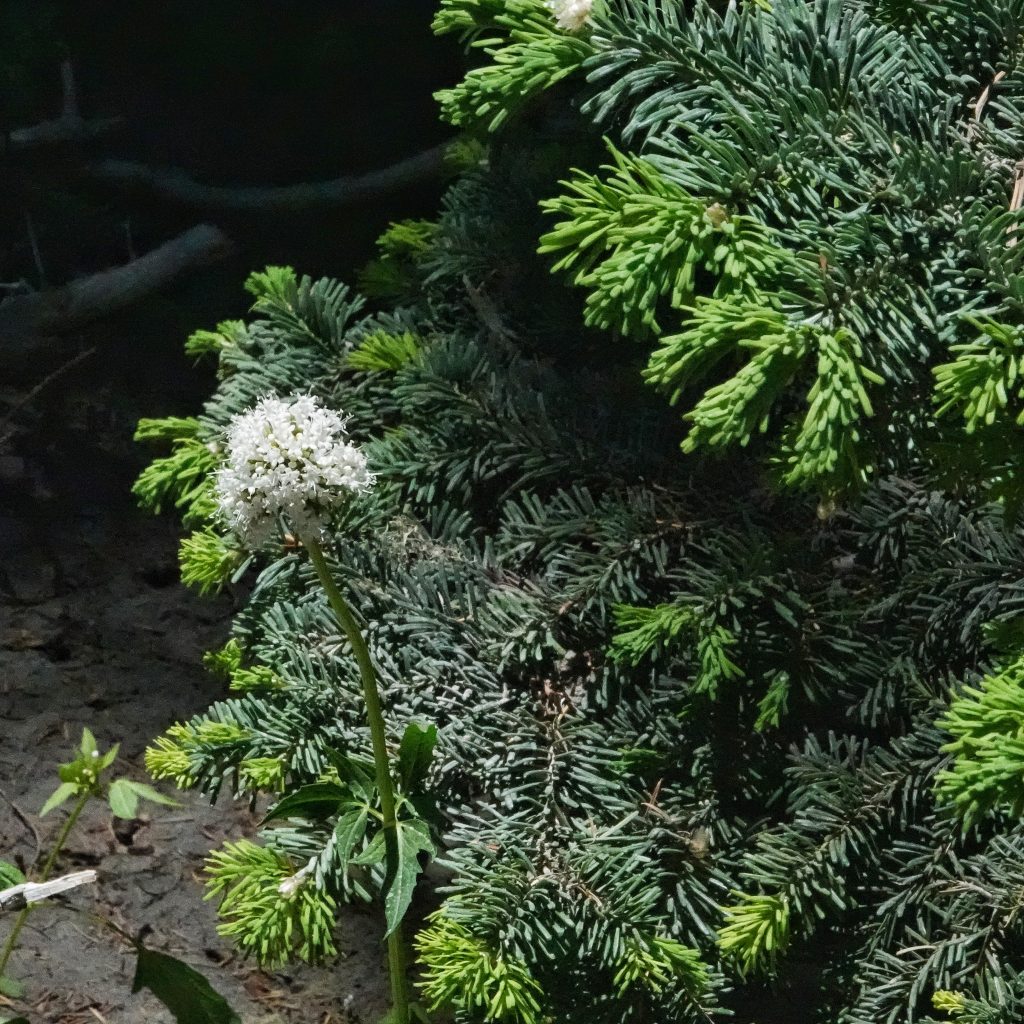
I was a little surprised to find this Valeriana sitchensis (most commonly called Sitka valerian, though some books call it mountain valerian or mountain heliotrope, the latter being because of an apparent similarity between the fragrance of the flowers of this plant to those of Heliotropium spp., though Heliotropium is in the borage family), though I do often find them in high elevations like these plants that I encountered on Mt. Hood. However, I usually find them in fairly large groups in damp mountain meadows, while these were in sandy soil in a narrow little draw in a forest opening. But my guess is that this area must harbor drifts of snow until relatively late in the year, and that that moisture nourishes these plants.
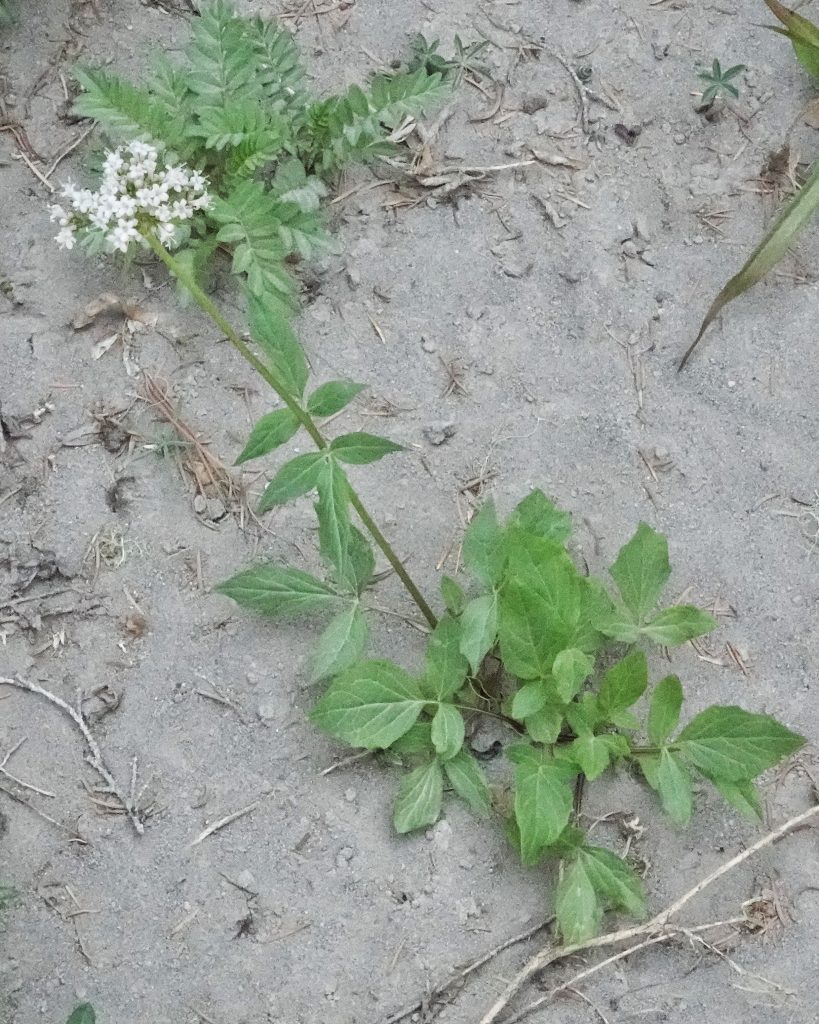
I was going to try to wax poetic about these plants, about their abundant nectar and pleasant fragrance, but Leslie Haskin in “Wild Flowers of the Pacific Coast” is better at that than I am, so I’ll quote him instead- “The tall wild valerian forms magnificent fields at, or near timberline in the mountains. This is one of the showy plants in high mountain meadows from Oregon, northward to Alaska. The lowland gardener, coming upon a field of valerian, may feel that here, in strange surroundings, he has found an old friend, so much does the wild plant resemble the well known cultivated form, commonly grown under the name ‘garden heliotrope’ [Valeriana officinalis, not Heliotropium spp.]. The flowers appear at the summit of the plant in compact cymes, white or shaded with pink, and rendered softly pleasing by the long protruding pistils. They are very sweet scented, but there is a strong medicinal smell to the crushed leaves and root that is far from pleasant. This is the smell of the drug valerian, found both in the wild and cultivated plants, and of medicinal value.”
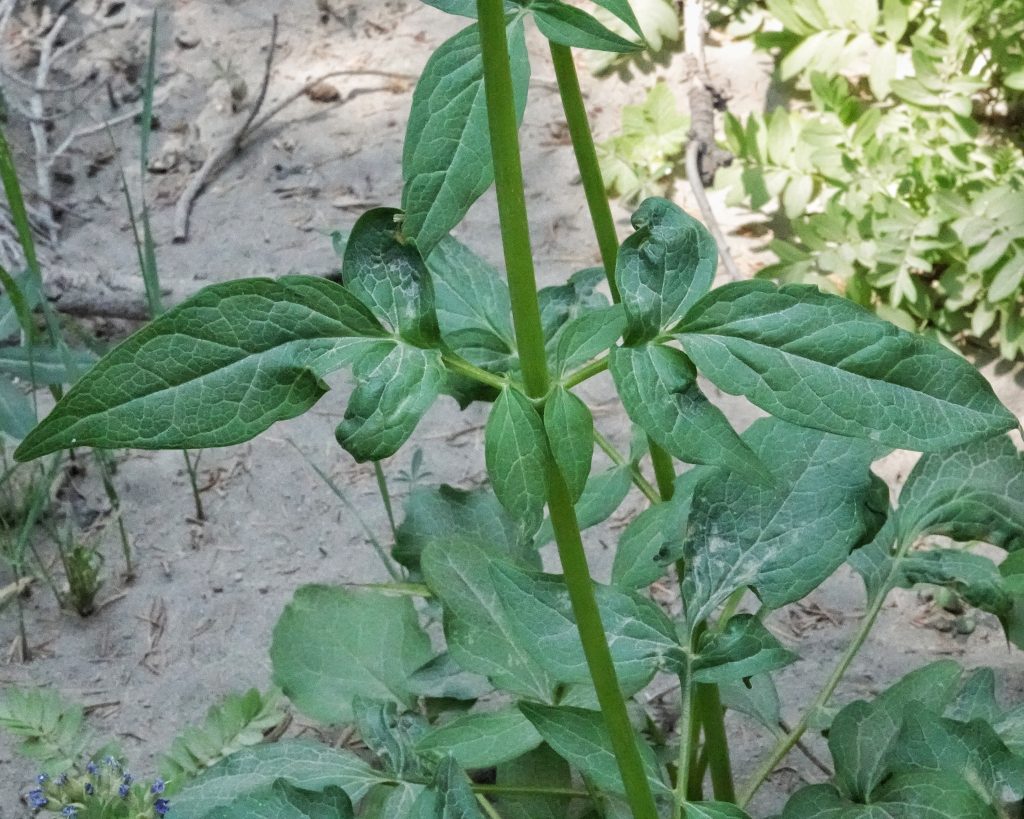
Ethnobotany– “ First Nations people’s used the roots of Sitka valerian medicinally. They rubbed chewed roots onto their heads to relieve headaches, prepared poultices from them for earaches, cuts, and wounds, and applied them to people suffering seizures. The Alaskan Tlingit called it ‘the medicine that stinks’. Crushed roots were applied to mothers’ nipples when it was time to wean a child…” Pojar/MacKinnon, “Alpine Plants of the Northwest”, 2013; “…Decoction of roots used as a lotion or wash for swellings or sores on horses…Decoction of roots, leaves, stems and flowers taken for influenza…Decoction of roots, leaves, stems and flowers taken for ulcers or stomach trouble…Poultice of roots applied to cuts, wounds, bruises and inflamed regions…Leaves mixed with other plant leaves and smoked…” For more information see the 25 entries at BRIT – Native American Ethnobotany Database; “Valerian is a well-known and frequently used medicinal herb that has a long and proven history of efficacy. It is noted especially for its effect as a tranquilliser and nervine, particularly for those people suffering from nervous overstrain[4, 222]. Valerian has been shown to encourage sleep, improve sleep quality and reduce blood pressure[254]. It is also used internally in the treatment of painful menstruation, cramps, hypertension, irritable bowel syndrome etc[238, 254]. It should not be prescribed for patients with liver problems[238]. Externally, it is used to treat eczema, ulcers and minor injuries[238]. The root is antispasmodic, carminative, diuretic, hypnotic, powerfully nervine, sedative and stimulant[4, 7, 9, 14, 21, 46, 147, 165, 192, 218]. The active ingredients are called valepotriates, research has confirmed that these have a calming effect on agitated people, but are also a stimulant in cases of fatigue[222]. The roots of 2 year old plants are harvested in the autumn once the leaves have died down and are used fresh or dried[4, 9, 238]. The fresh root is about 3 times as effective as roots dried at 40° (the report does not specify if this is centigrade or fahrenheit), whilst temperatures above 82° destroy the active principle in the root…Some caution is advised with the use of this plant. At least one member of the genus is considered to be poisonous raw[161] and V. officinalis is a powerful nervine and sedative that can become habit-forming.” Valeriana sitchensis American Valerian, Sitka valerian PFAF Plant Database
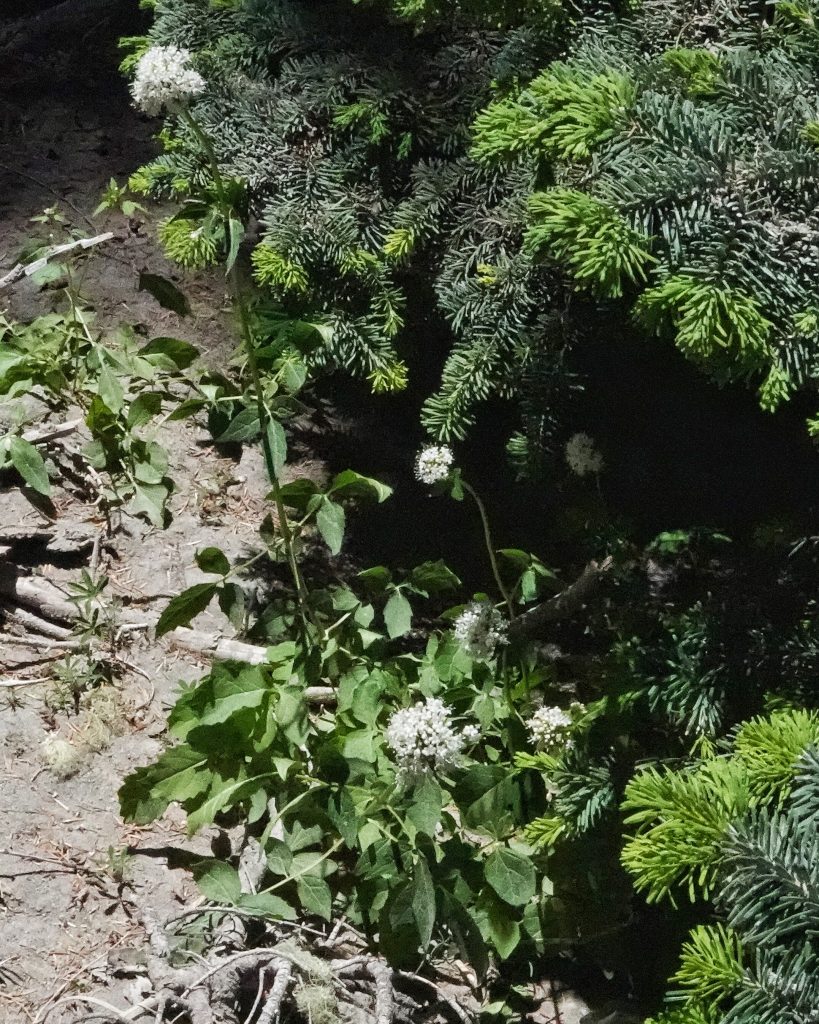
Description– Perrenial plants that are erect, 1-4’ tall, with many stem leaves and umbels of white to pink flowers with greatly exserted stamens that are over 4mm wide and up to 9mm long; often has most leaves along the stem, and they are lobed, toothed, and stalked.
Similar species–Valeriana acutiloba has upper leaves sessile; V. occidentalis and V. dioica have flowers less than 4mm across; V. columbiana has flowers more than 11mm long, whose stamens are not exserted; Bistorta bistortoides (Western bistort) has all leaves basal.
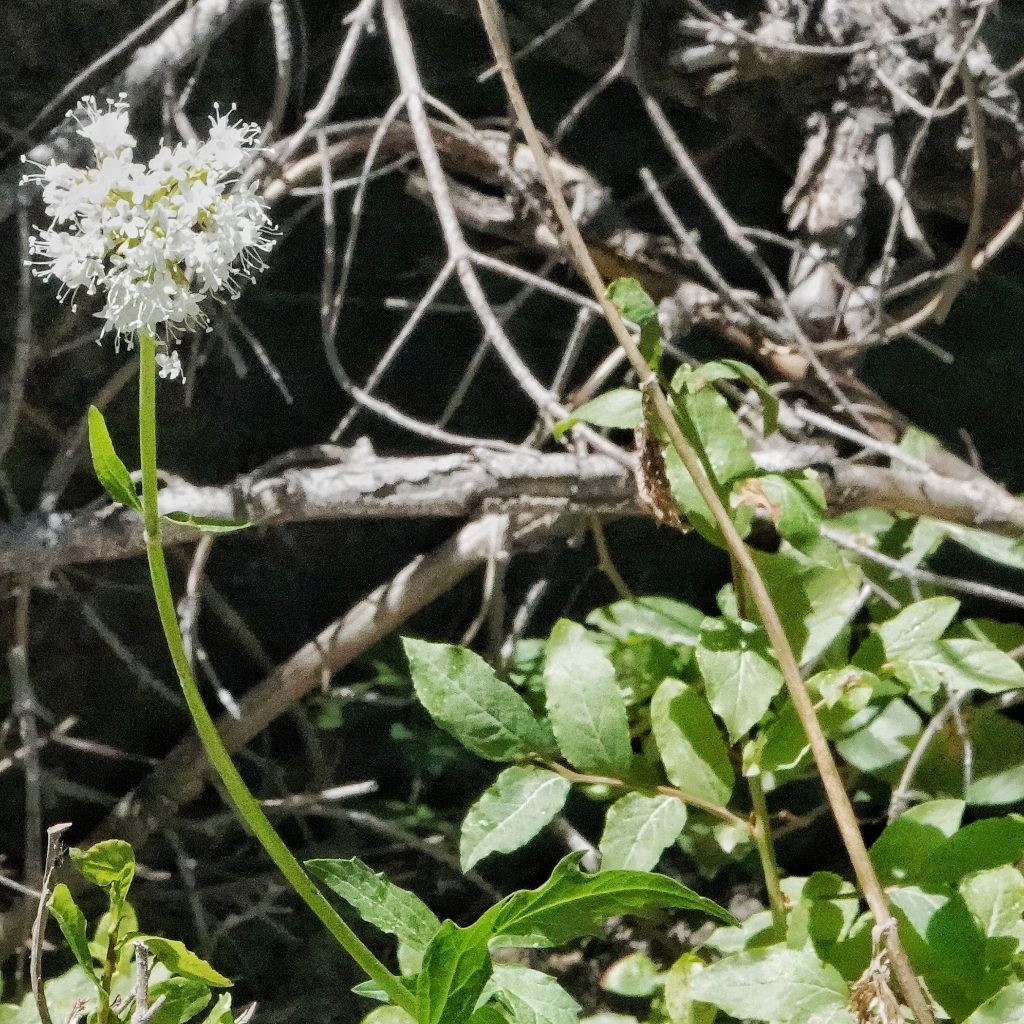
Habitat– “Common in moist areas at mid- to high elevations in the mountains.” Valeriana sitchensis – Burke Herbarium Image Collection
Range– Western North America; found region wide in the PNW in montane regions.
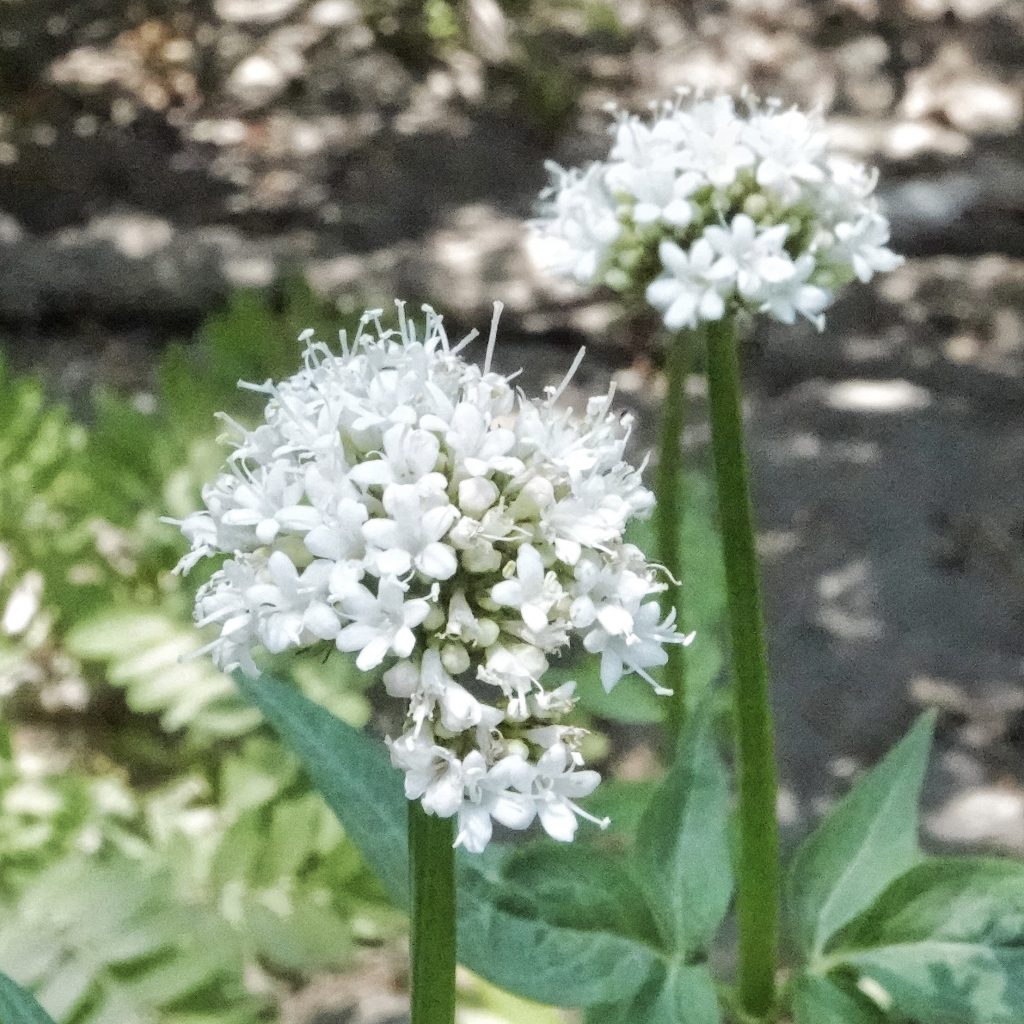
Eaten by– “Nectar: Clodius Parnassian, Spring White, Western White, Edith’s Checkerspot, Red Admiral, Pacific Fritillary, Arctic Skipper” https://www.cnps-scv.org/images/handouts/CaliforniaPlantsforLepidoptera2014.pdf; in “Leafminers of North America – 2nd Edition” Charley Eiseman lists the larvae of the leaf mining flies Phytomyza kluanensis and Liriomyza valerianivora as utilizing this plant; probably browsed by mammalian herbivores.
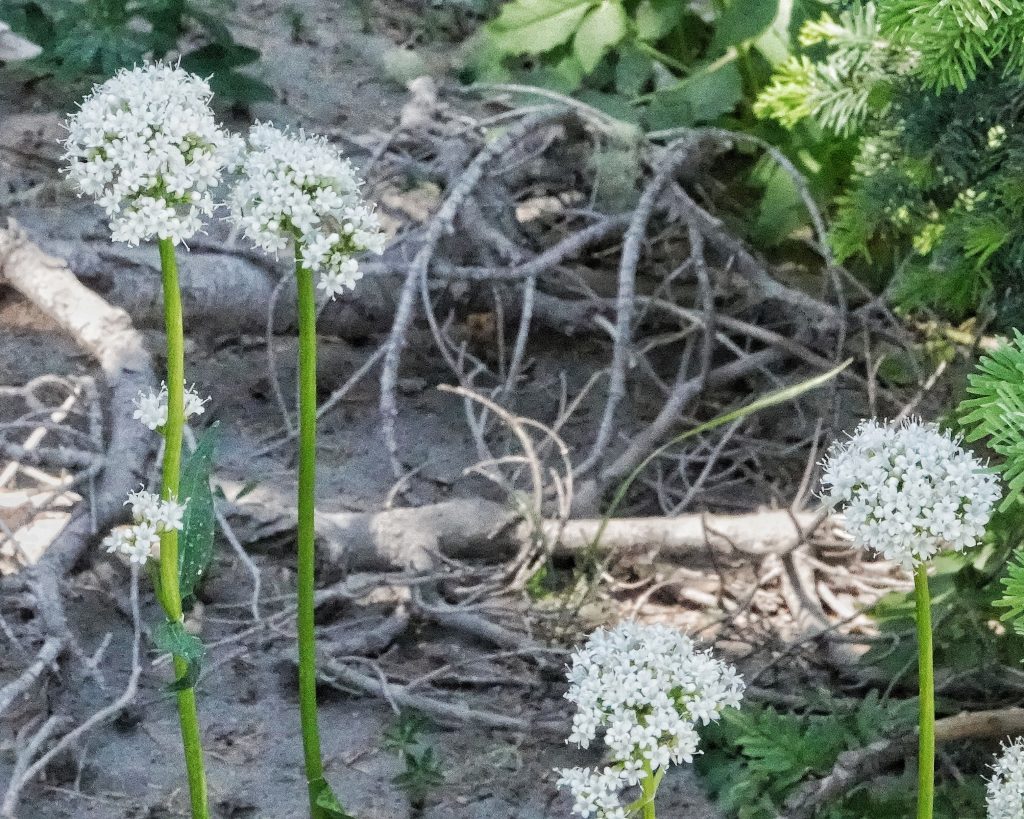
Reproductive timing– Flowers bloom from June into August, depending on elevation and latitude.
Etymology of names– Valeriana appears to be from the Latin word for ‘to be strong’, but I cannot verify either that or what it might reference. The specific epithet sitchensis refers to the type locality of this species near Sitka, Alaska.
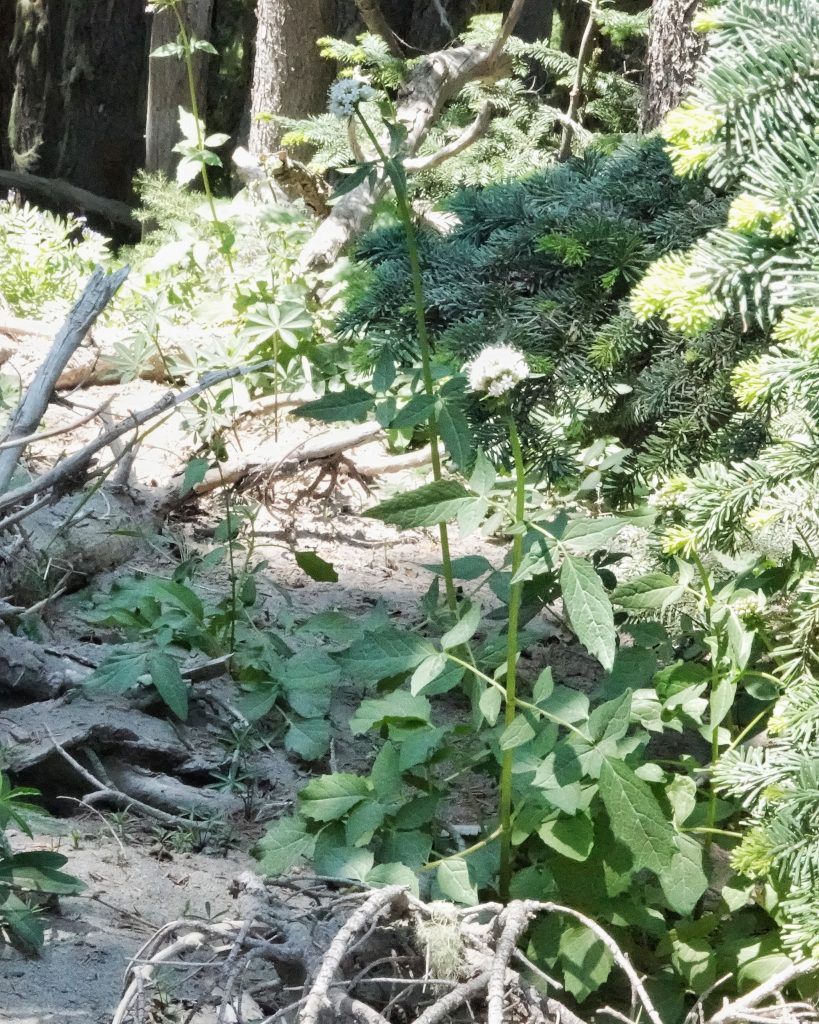
Valeriana sitchensis | Sitka Valerian | Wildflowers of the Pacific Northwest
E-Flora BC: Electronic Atlas of the Flora of BC
BRIT – Native American Ethnobotany Database
Valeriana sitchensis American Valerian, Sitka valerian PFAF Plant Database
https://www.cnps-scv.org/images/handouts/CaliforniaPlantsforLepidoptera2014.pdf
Valeriana sitchensis – Burke Herbarium Image Collection
Valerian – A Wildflower Journal
Sitka Valerian (Valeriana sitchensis) | nwwildflowers
OregonFlora Valeriana sitchensis
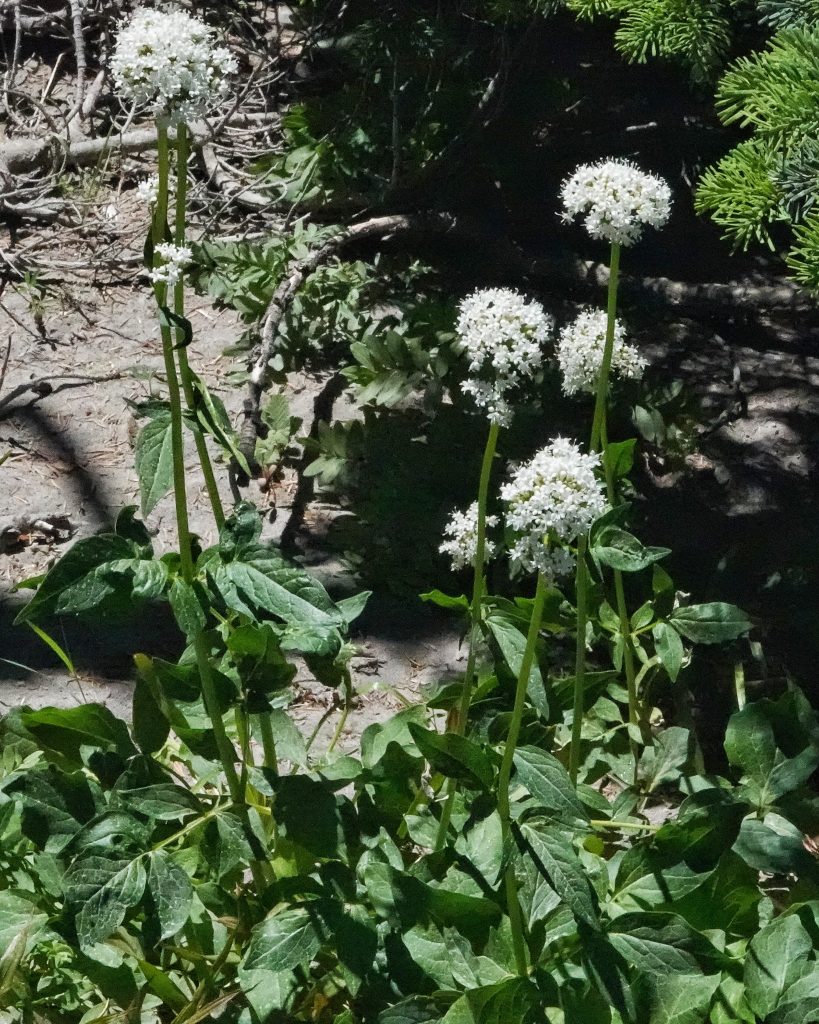
Hi Dan. Little side story for you. I noted many of the citations you quoted were based on Nancy Turner’s work. As BCs premier ethnobotanist her work dominates PNW literature. That said as a lowly field hand, ie a guy trying to build an educational native plant, I contacted her once in need of photos of plants I had in the ground but had not yet flowered. I needed them for signage. I emailed her with my humble request with nothing to offer her but gratitude. She replied immediately asking for a list of plants whose photos she could send, and by days end I had them in my possession. How gracious is that? Since then I’ve made a friend who is a landscape ecologist in Victoria BC who is friends with her and speaks kindly of her generosity to the scientific community.
Thanks for sharing that, Doug! I have definitely been impressed by how friendly and helpful the vast majority of ‘experts’ in the biological fields, especially field biologists, have been when I’ve asked them questions. Seems it’s mostly very good people that go into those fields.
These are in bloom right now all along the trail up to Cutthroat Pass in the North Cascades. I have valerian in my garden, a few varieties of it, actually, but had never noticed any along a trail before. It was a wonderful surprise.
And it can get mobbed by pollinators sometimes,Kat!
They grow all over mount rainier. I’ve tried some when I had trouble sleeping. It is very efficient
Cool! Glad to hear of its efficacy. Thanks for sharing that with us, Lucy!